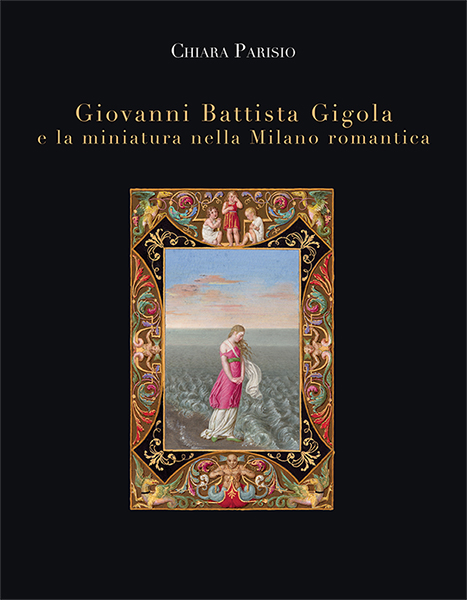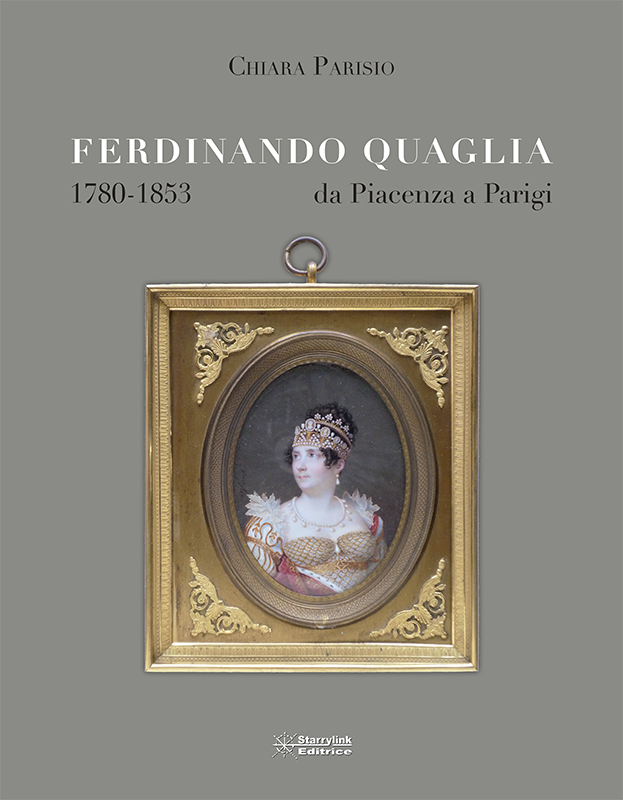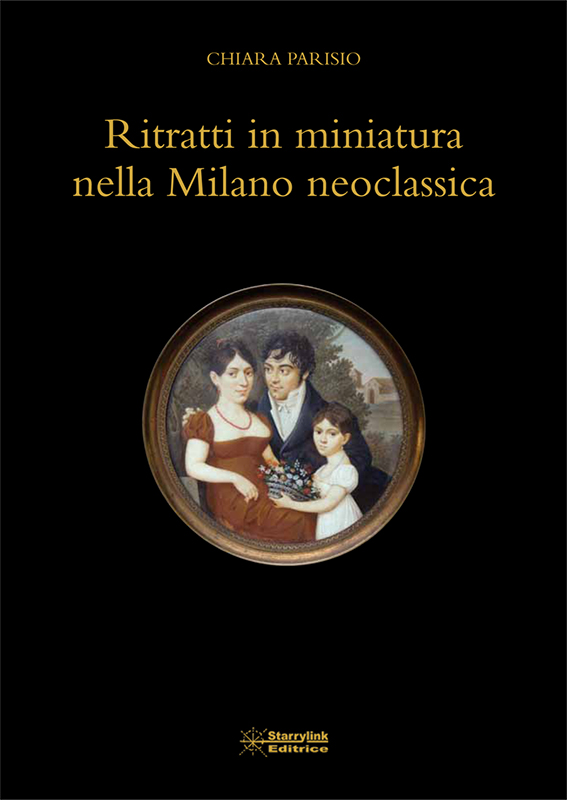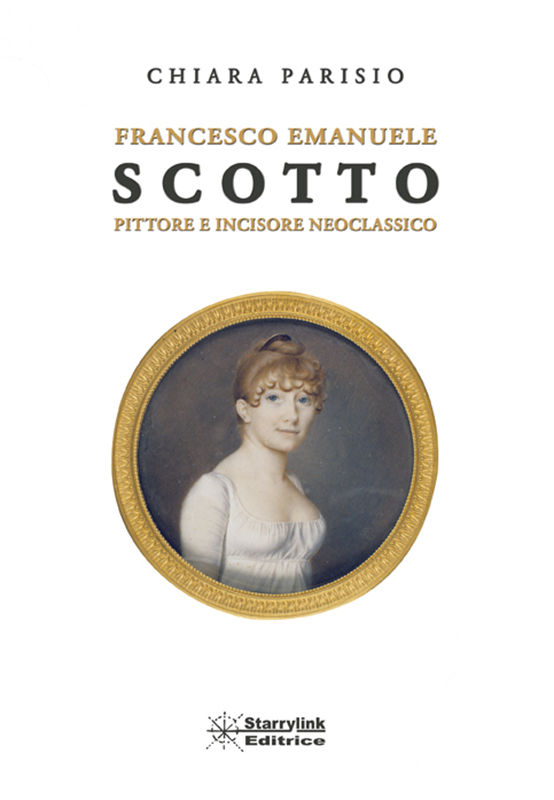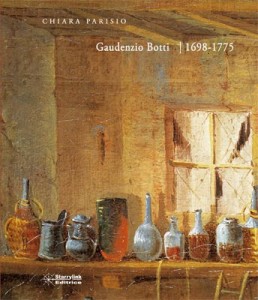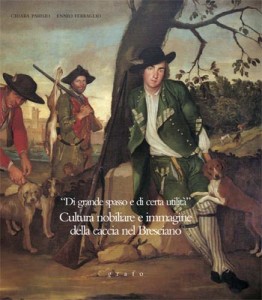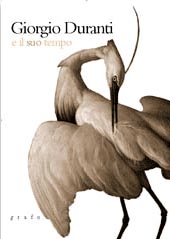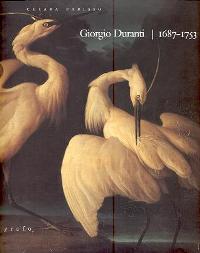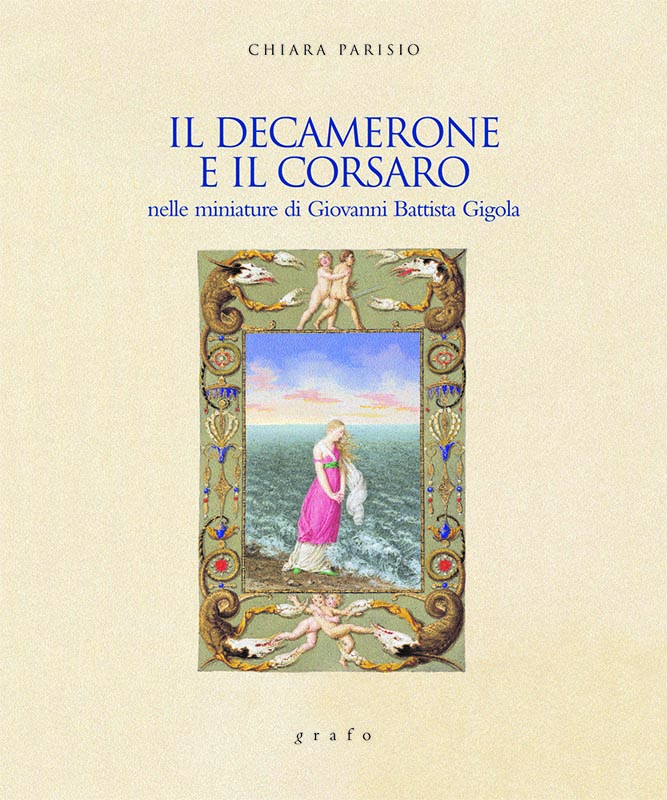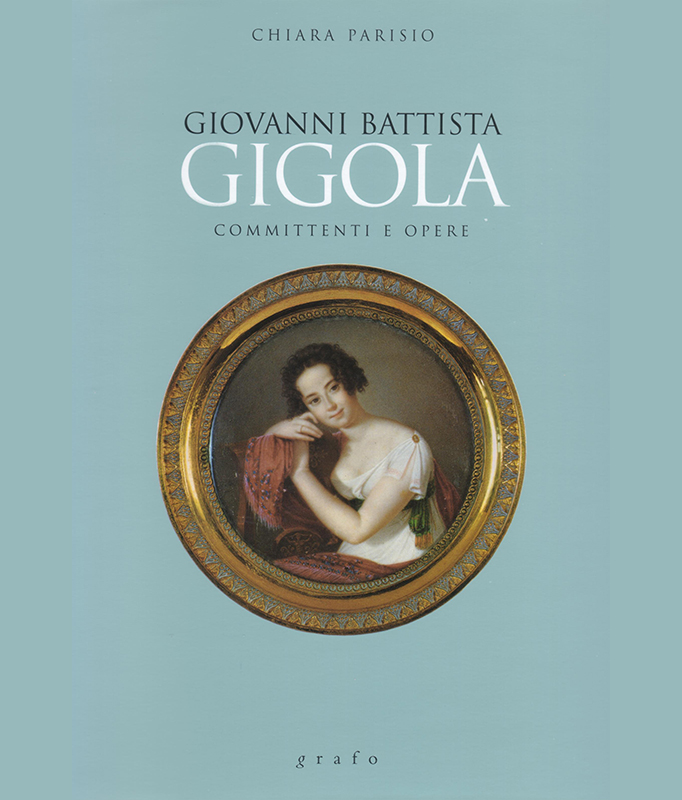L’auteur
Historienne de l’art formée à Florence, Chiara Parisio s’est spécialisée dans le domaine de la peinture lombarde de la Renaissance à la période néo-classique en dressant les catalogues scientifiques d’institutions publiques et privées. Depuis 1997, elle publie articles et monographies sur les portraits peints en miniatures, tels, en 2002-2003, la trilogie consacrée à Giovanni Battista Gigola, 1767-1841 (Committenti e opere; Giulietta e Romeo; Il Decamerone e il Corsaro), en 2009, Francesco Emanuele Scotto pittore e incisore neoclassico (1757-1826) et en 2010, Ritratti in miniatura nella Milano neoclassica.
Livres
Pour commander les livres, s’il vous plaît contactez Librairie “La Fenice” ou Amazon.
C. Parisio, Giovanni Battista Gigola e la miniatura nella Milano romantica
Brescia, 2020 (pp. 112), € 35
Auteur: Chiara Parisio
Titre: Giovanni Battista Gigola e la miniatura nella Milano romantica
Langue: Italien
Édition: Brescia, 2020
ISBN: 9791220075411
Format: Couverture souple à rabats, cahiers cousus, 21x27cm, 112 pages couleurs
Prix: € 35
Cet ouvrage complète ce que Chiara Parisio a déjà publié sur Giovanni Battista Gigola (1767-1841) en 2002, 2003 et 2010. L’analyse porte sur de nouvelles miniatures, la décoration enluminée de Roméo et Juliette pour Sommavira et sur deux exemplaires récemment découverts, peints sur vélin, de copies du Corsaire faites pour Schönborn et Trèves. L’ouvrage comporte également des oeuvres des contemporains de Gigola actif à Milan sous l’Empire et la restauration, notamment Alessandria, Banchi, Betoldi, Boatti, Carloni, de Albertis, Gasparoli, Londonio, Moriggia, Perego, Romanini, Schiavoni et Scotto.
C. Parisio, Ferdinando Quaglia (1780 -1853) da Piacenza a Parigi
Starrylink Editrice, Brescia, 2012 (pp. 104), € 32
Auteur: Chiara Parisio
Titre: Ferdinando Quaglia 1780 -1853 da Piacenza a Parigi
Langue: Italien
Couverture souple à rabats, cahiers cousus, 21 x 27 cm, 104 pages
Illustrations en noir et blanc, 15 planches en couleur
Éditeur: Brescia, Starrylink editrice, € 32
ISBN: 9788896225417
Le peintre. Ferdinando Quaglia est un merveilleux peintre italien, encore mal connu dans sa patrie. Cet ouvrage est le premier à lui être consacré. Portraitiste en miniature de renommée internationale, l’artiste naquit à Plaisance, en 1780. Formé dans sa ville natale, à l’Institut Gazzola, il se perfectionna à Parme, en 1797, auprès du fameux Callani, puis à Florence. En 1805, il s’installa définitivement à Paris où il vécut près de cinquante ans.
La perfection de son travail en fit le miniaturiste préféré de l’impératrice Joséphine et de nombreuses personnalités de la cour napoléonienne, des diplômates aux artistes. Son succès se prolongea sous la Restauration. Entre 1808 et 1824, il exposa occasionnellement au Salon. Après 1830, on ne lui connaît plus qu’une activité de lithographe, dont témoigne le recueil des monuments du cimetière du Père La Chaise.
L’Italie conserve quelques miniatures de Quaglia: les portraits de Giovanni Battista Maggi (Plaisance, Institut Gazzola), Pietro Cavagnari (Florence, musée des Offices), l’Archiduc Ferdinand Joseph de Würzburg (collection particulière), la célèbre cantatrice Giuseppina Grassini (Milan, Museo Teatrale alla Scala) et d’un Homme de qualité (Florence, palais Pitti), ainsi qu’un un Profil de femme au pastel (Rome, Museo Napoleonico) et un exemplaire du recueil de lithographies du cimetière du Père La Chaise (Plaisance, Bibliothèque communale). La plus grande partie de l’œuvre de l’artiste se trouve dans de nombreuses collections publiques et privées européennes et américaines.
Sommaire : Fortune critique • Biographie • Commanditaires et production picturale • Catalogue de l’oeuvre • Planches en couleur • Reproduction des principaux monuments du cimetière du Père La Chaise, à Paris, dessinés et lithographiés par Quaglia • Chronologie • Pièces d’archives • Bibliographie • Liste des expositions • Index des noms de personnes représentées.
C. Parisio, Ritratti in miniatura nella Milano neoclassica
Starrylink Editrice, Brescia, 2010 (pp. 112), € 24
This study is the culmination of years of research on Neoclassical miniature portraits on ivory by Dr Chiara Parisio. The author provides a classification and schema of the miniaturists working in Milan during the Neoclassical period (1775-1825). The study includes artists who were active for the Napoleonic Court and its aristocratic entourage. During the period, acquisitions of miniature portraits by the bourgeoise became of ever greater importance, bestowing prestige and wealth on the artists, especially during the years of the Austrian Restoration. As well as Milanese artists, many regional artists came to the Ambrosian city in search of work opportunities. The provincial miniaturists represented here include Gigola of Brescia, Boatti of Bergamo, Betoldi of Como, Banchi of Novara and many others.
C. Parisio, Francesco Emanuele Scotto, pittore e incisore neoclassico
Starrylink Editrice, Brescia, 2009 (pp. 96), € 20
The subject of this monograph is the painter Francesco Emanuele Scotto (Genoa, 1757-1826) who was active in Genoa and Milan during the Neoclassic period. Highly regarded during his lifetime as a portraitist, with this volume Dr Parisio reintroduces Scotto to the arts community and the general public.
The artist trained in Genoa at the Accademia Ligustica where he went on to become a respected academic and eventually the director of the School of Engraving and Painting. During his career he travelled to Rome to undertake further studies where he drew inspiration from Antiquity, as well as the works of the Italian Masters of the 16th and 17th Centuries. He was also influenced by the works of his contemporaries such as Anton Raphael Mengs and Pompeo Batoni.
In Genoa Scotto worked on large canvases such as the Lesson on the Geography of Astronomy (Accademia Ligustica), the Crucifixion (Chiesa della Santissima Annunziata del Vastato) and the remarkable portrait of Lilla Cambiaso Giustiniani with her son Nicolò, private collection).
During the Napoleonic era Scotto moved to Milan where he painted miniature portraits of the Aristocracy and the Haute Bourgeoisie while also painting portraits of fellow artists [Giuseppe Longhi ( Pinacoteca di Brera), Alessandro Manzoni (private collection)] and printmaking.
He undertook commissions for the viceroyal court (Napoleon Bonaparte, private collection; Gioacchino Murat, Milan, Civica Raccolta delle Stampe Bertarelli) and for the La Scala theatre (portraits of singers, ballerinas, composers). During the Italian Restoration he illustrated literary works (Ilyad, Rime by Petrarca). Scotto died in Genoa in 1826.
C. Parisio, Gaudenzio Botti 1698-1775
Starrylink Editrice, Brescia, 2007 (pp. 96), € 38
C. Parisio, E. Ferraglio, “Di grande spasso e di certa utilità”. Cultura nobiliare e immagine della caccia nel Bresciano
Grafo edizioni, Brescia, 2005 (pp. 122), € 26
(a cura di) C. Parisio, Giorgio Duranti e il suo tempo, atti della giornata di studi (Palazzolo sull’Oglio, Palazzo Duranti Marzoli, 22 maggio 2004)
Grafo edizioni, Brescia, 2005
C. Parisio, Giorgio Duranti 1687-1753
Grafo edizioni, Brescia, 2004 (pp. 120)
C. Parisio, Il Decamerone e il Corsaro nelle miniature di Giovanni Battista Gigola
Grafo edizioni, Brescia, 2003 (pp. 80), € 28
In the frame of the rich artistic production of Giovanni Battista Gigola (1767- 1841) the decoration of classics with illuminated works deserves particular attention.
This volume focuses on the illustration of a copy of the Decameron by Giovanni Boccaccio for Marquise Trivulzio (1811; Milano, Biblioteca Trivulziana). The painter decided to illustrate ten tales, selected one from each day of the collection, in addition to a portrait of Boccaccio and a scene of the peste in Florence of 1348.
The Corsair by Lord Byron (1826) was decorated in three copies: the only one known today, formerly in property of Gigola itself, is now belonging to the Ateneo di Scienze, Lettere e Arti in Brescia.
C. Parisio, Giulietta e Romeo nella illustrazione di Giovanni Battista Gigola per Ferdinando III d’Asburgo-Lorena
Grafo edizioni, Brescia, 2002 (pp. 88), € 25
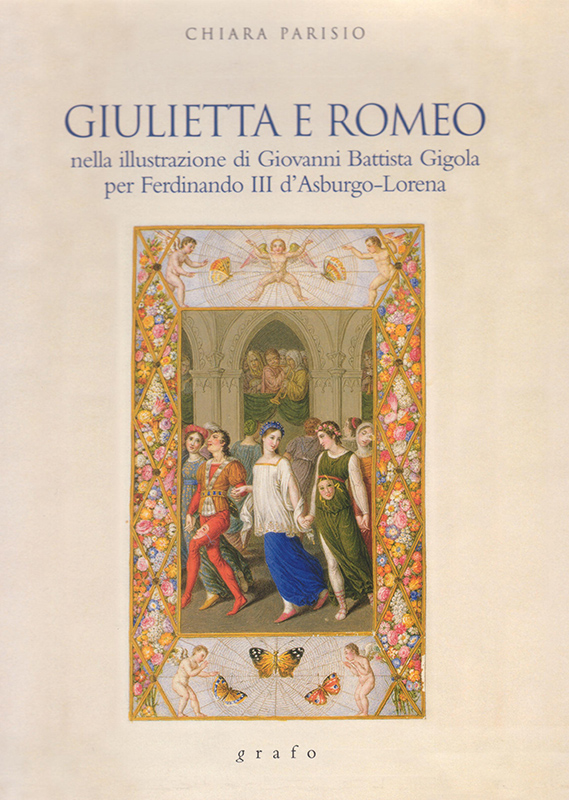
This work examines one of the most important and popular works of Gigola’s career, the decoration of the so-called Giulietta e Romeo or Historia novellamente ritrovata di due nobili amanti by Luigi da Porto, written around 1524. Gigola’s work was printed in seven copies on vellum in 1819 and decorated with elaborated illuminations between 1819 and 1825. Only four copies survive: this volume focuses on the copy produced in 1822 for Ferdinand III of Hapsburg-Lorraine, Grand Duke of Tuscany.
A brief account of Gigola’s life and work is followed by an examination of the novel of Giulietta e Romeo from a literary and historical perspective. A pictorial analysis of the Giulietta e Romeo is then given followed by a discussion of the historical and cultural context in which the work for Ferdinand III of Hapsburg-Lorraine was conceived.
All the illustrated pages are reproduced and the comments of Alessandro Torri (1826) are reported. The illuminations produced for the copy made for Lord Spencer are also illustrated for comparison, along with the comments of Thomas Frognall Dibdin who was his librarian (1822).
C. Parisio, Giovanni Battista Gigola. Committenti e opere
Grafo edizioni, Brescia, 2002 (pp. 192), € 38
This study focuses on the activity of Giovanni Battista Gigola (1767- 1841). The book illustrates the variety of his talents and re-evaluates his reputation, not just as a miniaturist but as a painter. Gigola’s career is assessed using documentary evidence and by examining the important contacts he established with influential contemporaries, notably Gian Giacomo Trivulzio and Gian Battista Sommariva. The author traces Gigola’s rich career from his largely unknown early training in Lombardy to his long and stimulating stay in Rome, during which the young artist immersed himself in classical culture and made a devoted study of the great masters of the sixteenth and seventeenth centuries. Gigola then travelled to Paris and finally settled in Milan. His success culminated in his portraits of the Viceroy of Italy, Eugène de Beauharnais, and of the Emperor Franz I. An important area of his work was also the illuminated decoration of classic literary works.
C. Parisio, La pittura bresciana dei secoli XV e XVI negli scritti inediti di Giovanni Battista Cavalcaselle
Quaderni della Biblioteca dei Civici Musei, Brescia, 1999 (pp. 331)
Subscribe to our newsletter and stay updated on all our latest news by clicking here
If you want to contact the author, please use the form below.
